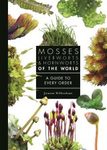About this book
Rising temperatures are affecting organisms in all of Earth's biomes, but the complexity of ecological responses to climate change has hampered the development of a conceptually unified treatment of them. In a remarkably comprehensive synthesis, Ecology of Climate Change presents past, ongoing, and future ecological responses to climate change in the context of two simplifying hypotheses, facilitation and interference, arguing that biotic interactions may be the primary driver of ecological responses to climate change across all levels of biological organization.
Eric Post's synthesis and analyses of ecological consequences of climate change extend from the Late Pleistocene to the present, and through the next century of projected warming. His investigation is grounded in classic themes of enduring interest in ecology, but developed around novel conceptual and mathematical models of observed and predicted dynamics. Using stability theory as a recurring theme, Post argues that the magnitude of climatic variability may be just as important as the magnitude and direction of change in determining whether populations, communities, and species persist. He urges a more refined consideration of species interactions, emphasizing important distinctions between lateral and vertical interactions and their disparate roles in shaping responses of populations, communities, and ecosystems to climate change.
Contents
Preface: Purpose, Perspective, and Scope xiii
The Tension and Facilitation Hypotheses of Biotic Response to Climate Change xiv
Acknowledgments xxi
1. A Brief Overview of Recent Climate Change and Its Ecological Context 1
Climate Change versus Global Warming 3
Temperature Changes 3
Precipitation Changes 9
Changes in Snow and Ice Cover 11
El Niño-Southern Oscillation 13
Paleoclimatic Variation 15
Studying the Ecological Effects of Climate Change 16
The Study Site at Kangerlussuaq, Greenland 21
2. Pleistocene Warming and Extinctions 24
The Pleistocene Environment As Indicated by Its Fauna 24
Biogeography and Magnitude of Pleistocene Extinctions and Climate Change 29
Case Studies of Pleistocene Megafaunal Extinctions 35
Pleistocene Microfaunal Extinctions and Species Redistributions 44
Spatial, Temporal, and Taxonomic Heterogeneity in
Pleistocene Redistributions: Lessons to Be Learned 46
Reconsidering the Megafaunal Extinctions: The Zimov Model 50
Relevance to Contemporary Climate Change 52
3. Life History Variation and Phenology 54
Geographic and Taxonomic Variation in Phenological Response to Climate Change 54
Pattern and Scale in Phenological Dynamics 59
Phenology and the Aggregate Life History Response to Climate Change 64
Temporal Dependence and a Model of Phenological Dynamics 67
The Iwasa-Levin Model and Its Relevance to Climate Change 75
Modeling the Contribution of Phenology to Population Dynamics 86
Trends and Statistical Considerations 88
Empirical Examples Linking Climate, Phenology, and Abundance 91
More Complex and Subtle Forms of Phenological Variation 92
4. Population Dynamics and Stability 96
Establishing the Framework for Addressing Population Response to Climate Change 97
Classic Treatments of Population Stability Viewed Afresh through the Lens of Climate Change 102
Incorporation of Climate into Time Series Models 106
Simultaneous Thresholds in Population-Intrinsic and Population-Extrinsic Factors 111
Population Synchrony and Extinction Risk 119
Erosion of Population Cycles 124
Global Population Dynamics, Population Diversity, and the Portfolio Effect 128
5. The Niche Concept 132
Grinnellian Niches and Climate Change 134
Niche Vacancy 138
Niche Evolution 139
Phenotypic Plasticity and Evolutionary Response to Climate Change 144
Niche Conservatism 146
Modes of Niche Response to Climate Change 149
Bioclimatic Envelope Modeling and Environmental Niche Models 155
6. Community Dynamics and Stability 163
Communities Defined through Lateral and Vertical Structuring 164
Regional versus Local Diversity and the Community Concept 165
Exploitation and Interference Interactions 167
Gleasonian and Clementsian Communities 169
Non-analogues: The Community Is Dead-Long Live the Community 171
The Role of Climate in Mediating Species Interactions versus the Role of Species Interactions in Mediating Community Response to Climate Change 176
Phenology and the Ephemeral Nature of Communities 181
The Green World Hypothesis, and Phenology As an Index of Resource Availability 186
Asynchrony and Trophic Mismatch 187
The Cafeteria Analogy of Trophic Mismatch in Time and Space 198
Gleasonian Dynamics and Stability in Laterally Structured Communities 200
Dynamics and Stability in Vertically Structured Communities 203
Development of the Process-Oriented Model for Vertical Communities 205
Derivation of the Predator-Level Statistical Model 207
Derivation of the Herbivore-Level Statistical Model 208
Derivation of the Vegetation-Level Statistical Model 210
The Community Matrix and Its Stability Properties 211
Trophic Interactions, Dynamic Complexity, and Stability in Vertical Communities 213
7. Biodiversity, Distributions, and Extinction 217
Distributional Shifts in Species' Ranges 222
Scale and Pattern in Distribution and Abundance 224
Biodiversity Changes through Elevational Colonization and Extinction 226
Amphibian Extinction and the Climate-Pathogen Hypothesis 230
Biodiversity and Stability 233
Tropical Deforestation and Climate Change 245
Biodiversity, Climate Change, and Human Exploitation 248
8. Ecosystem Function and Dynamics 249
Stability, Diversity, and Ecosystem Resilience 254
Nutrient, Temperature, and CO2 Manipulations 257
Carbon Dynamics and Projected Responses to Global Climate Change 265
Tropical Deforestation, Carbon Turnover, and Model Projections of Changes in Carbon Dynamics 276
Role of Animals in Ecosystems of Relevance to Climate Change 286
Herbivores, Warming, and Ecosystem Carbon Dynamics 289
9. Brief Remarks on Some Especially Important Considerations 297
Trends and Variability Revisited 297
Community Response to Climate Change: Further Considerations 299
The Scale-Invariant Nature of Non-analogues 300
Lack of Detection Does Not Always Mean Lack of Response 300
A Greater Emphasis on Phenology 301
Direct versus Indirect Ecological Responses and the Thief in the Night 302
References 303
Index 359
Customer Reviews
Biography
Eric Post is professor of biology and ecology at Pennsylvania State University. He has published dozens of scholarly articles and book chapters on ecological responses to climate change, and is coeditor of Wildlife Conservation in a Changing Climate.









































